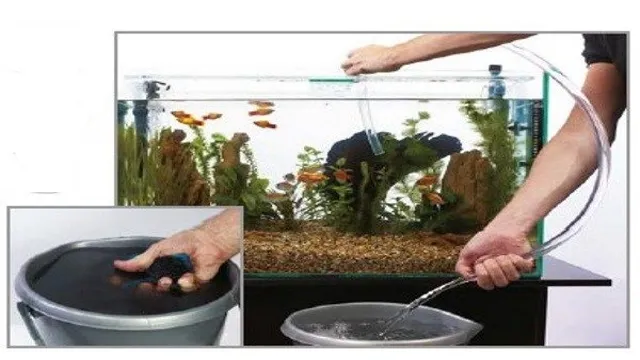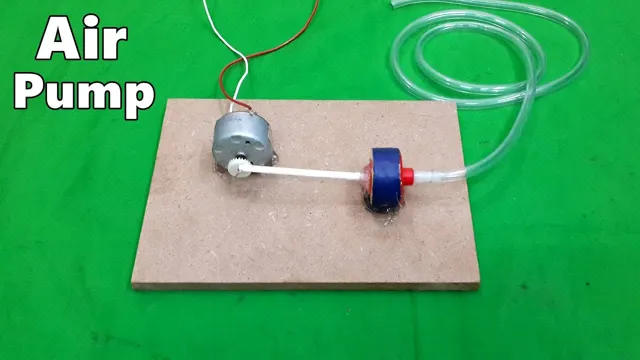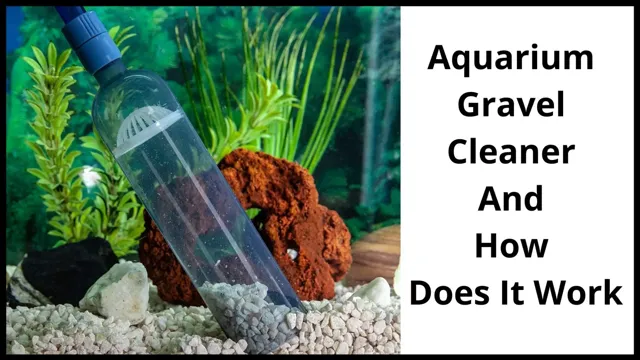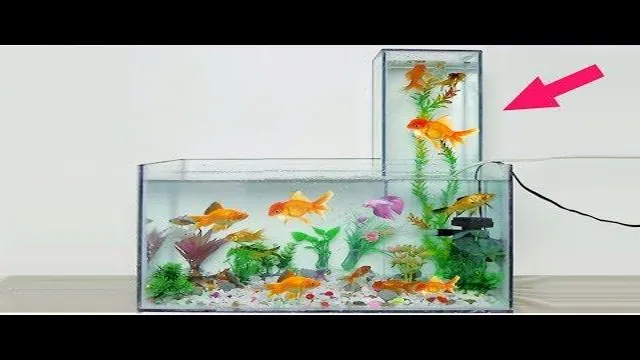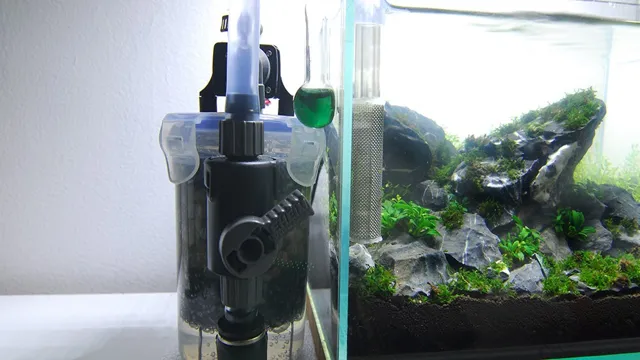If you’re a proud aquarium owner, you understand the importance of providing a clean and healthy environment for your fish to thrive. One of the most crucial steps you can take towards ensuring a healthy aquarium is regularly changing your filter cartridge. Not only does it keep the water quality healthy, but it also helps your aquarium accessories like heaters and air pumps work more effectively.
In this blog post, we’ll teach you everything you need to know about changing your aquarium filter cartridge to keep your fish happy and healthy. So grab a cup of coffee and let’s dive in!
Gather Your Materials
To change the aquarium filter cartridge, you need to gather all the necessary materials first. This includes the new filter cartridge, a bucket or container, cleaning materials such as scrubbers or sponges, and gloves to protect your hands. It’s important to choose a filter cartridge that is compatible with your specific filter model to ensure proper functioning and efficiency.
Also, make sure to read the instructions that come with the new cartridge. Gloves should be worn as the old cartridge may contain harmful bacteria or chemicals. A bucket or container is required to hold any dirty water that is removed during the process.
Having all the materials ready beforehand will ensure a smooth and hassle-free filter cartridge change.
Filter Cartridge Replacement
When it comes to maintaining your water filtration system, replacing the filter cartridges is a crucial step. But before you start, make sure you have all the necessary materials. You will need replacement filter cartridges that are compatible with your system, a towel or bucket to catch any drips, and a wrench or pliers to help you remove the old cartridge.
It’s also a good idea to have the user manual for your specific system on hand, so you can refer to it if you encounter any issues during the replacement process. With these materials ready, you’ll be well-equipped to ensure your water stays clean and safe for all your household needs. Don’t forget, regular filter cartridge replacement is an important part of keeping your water filtration system running smoothly and effectively.

New Filter Cartridge Preparation
When preparing a new filter cartridge for your water filtration system, it’s important to gather all of the necessary materials beforehand. This will help ensure that the process goes smoothly and efficiently. First and foremost, make sure you have a new filter cartridge that is compatible with your particular filtration system.
Next, gather any necessary tools such as a wrench or pliers to help with installation. You may also need a bucket or other container to catch any water that may spill during the process. Finally, have a clean cloth or paper towels on hand to wipe up any excess water or debris.
By having all of these materials ready ahead of time, you’ll save yourself time and frustration later on.
Removing the Old Filter Cartridge
Changing the filter cartridge in your aquarium is an important aspect of maintaining a healthy environment for your aquatic pets. One of the first steps in this process is to remove the old filter cartridge. Begin by unplugging the filter, and then locate the filter cartridge within the unit.
Depending on the type of filter you have, you may need to twist or pull the cartridge out of its housing. If the cartridge is dirty or clogged with debris, it may be difficult to remove, so take care not to damage the filter or the housing. Once the cartridge is removed, dispose of it properly and prepare to install a new one.
Remember to follow the manufacturer’s instructions for your specific type of filter cartridge. By consistently changing your aquarium filter cartridge, you can help ensure a healthy and clean environment for your beloved fish. (See Also: How to Add Iodine to Saltwater Aquarium: A Beginner’s Guide)
Power Off the Filter
When it’s time to remove the old filter cartridge from your aquarium, the first step is to power off the filter. This will prevent any water from continuing to flow through the filter, making it easier and less messy to remove the cartridge. Depending on the type of filter you have, there may be a switch or button to turn it off, or you may need to unplug it from the power source.
Once the filter is turned off, you can begin removing the old cartridge. It’s important to note that you should never rinse or clean the old cartridge with tap water, as this can kill the beneficial bacteria living on it. Instead, simply discard the old cartridge and replace it with a new one.
Maintaining a clean and functional filter is crucial for the health and happiness of your aquatic pets, so be sure to replace the filter cartridges according to the manufacturer’s recommendations. Your fish will thank you!
Remove the Media Basket
Removing the old filter cartridge is an essential part of maintaining the cleanliness of your aquarium water. To get started, you’ll need to remove the media basket from your filter. The media basket houses your filter cartridge, allowing water to pass through it as it passes through the filter.
Once you’ve removed the media basket, take a close look at the old filter cartridge to determine which end is the top and which is the bottom. Then, simply grip the cartridge firmly by the bottom and pull it out of the basket. Be careful not to damage the filter basket or any of the other components while doing this.
Remember, the health of your fish and aquatic plants relies on the cleanliness and efficiency of your aquarium filter, so be sure to replace your filter cartridge whenever it becomes clogged or dirty. By doing so, you’ll ensure that your aquarium water remains clear, healthy, and safe for all of your aquatic inhabitants.
Gently Remove the Old Cartridge
When it comes to replacing your pool filter cartridge, the first step is to gently remove the old one. To do this, you’ll want to start by turning off your pool’s filtration system. This will ensure that the water is no longer flowing through the cartridge, making it easier to remove.
Next, locate the cartridge housing and unscrew the top to reveal the cartridge inside. Carefully lift the old cartridge out of the housing, being sure not to let any debris or dirt fall into the open area left behind. Depending on the type of filter you have, you may need to twist or pull the cartridge out to remove it completely.
Once the cartridge is free, inspect it for any signs of wear or damage, as this can help you determine if it’s time for a replacement. With the old cartridge removed, you can clean out any remaining debris from the housing before installing your new cartridge. By following these steps, you’ll be able to remove your old filter cartridge safely and effectively, ensuring that your pool stays clean and clear all season long.
Installing the New Filter Cartridge
Changing the filter cartridge in your aquarium is an important task that should be done regularly to ensure the water quality and the health of your fish. Here’s a step-by-step guide on how to change aquarium filter cartridge. First, turn off the filter and unplug it from the outlet.
Then, remove the top of the filter and take out the old cartridge. Dispose of it properly. Next, rinse the filter container with tap water and replace it back into the filter. (See Also: How to Make a Self Sustaining Aquarium for Betta Fish: Your Ultimate Guide to Creating an Eco-Friendly Home for Your Beloved Fish)
Now, take the new cartridge out of its packaging and rinse it under tap water. Place it into the filter and make sure it’s seated securely. Finally, put the top of the filter back on and plug it back in.
Wait for about 10 minutes before turning the filter back on to allow the water to flow through the new cartridge. By following these simple steps, your aquarium’s filter will be operating at maximum efficiency and your fish will be healthy and happy.
Rinse the New Cartridge
When installing a new filter cartridge, it’s important to thoroughly rinse it before inserting it into the filtration system. This step ensures that any residue or particles that may have accumulated during the manufacturing process are removed. To rinse the cartridge, start by placing it under running water for a few minutes.
This will help to remove any loose debris. Then, fill a bucket with water and immerse the cartridge in it for around 30 minutes. This will allow any remaining particles to be washed away.
After rinsing, check the cartridge for any signs of damage or defects before inserting it into the system. Taking these steps will help to optimize the performance of the new cartridge and ensure that it works at its maximum capacity.
Gently Place the New Cartridge in the Filter
When it’s time to replace the filter cartridge in your water filtration system, it’s important to do it correctly to ensure optimal performance and safety. To install the new filter cartridge, gently place it inside the filter housing, making sure it’s seated securely in place. It’s important to follow the manufacturer’s instructions for installing the new cartridge as some models may require additional steps or specific positioning.
Make sure you don’t force the cartridge into place as this can damage the housing or cause leaks. Once the cartridge is in place, carefully tighten the filter housing and turn on the water supply. Observe for any signs of leaks or abnormalities.
By properly installing a new filter cartridge, you can ensure that your water filtration system functions correctly and provides you with clean and safe drinking water.
Finishing the Replacement Process
When it comes to changing an aquarium filter cartridge, it’s important to follow a few simple steps to ensure your tank stays clean and healthy. First, turn off your filter and unplug it from the power source to avoid any accidents. Next, carefully remove the old cartridge and dispose of it properly.
Take care not to disturb the filter media or bacteria bed as you do so. To install the new cartridge, simply slide it into place, making sure it fits securely. Finally, plug in and turn on the filter to start the new cartridge working.
Keep an eye on your water quality over the next few days to make sure everything is working properly. By following these steps, you can rest assured that your aquarium will remain a safe and healthy environment for your aquatic pets.
Conclusion
So there you have it, folks! Changing your aquarium filter cartridge is a crucial step in maintaining a happy and healthy aquatic environment for your fishy friends. Remember to always follow the manufacturer’s instructions and to never skip a filter change. And if you’re feeling extra fancy, why not add a little pizzazz by singing a tune or doing a dance while you’re at it? Your fish will thank you for the added entertainment value. (See Also: How to Boil Aquarium Gravel: Easy Steps for a Safer Fish Tank)
Happy filtering!”
FAQs
What is an aquarium filter cartridge?
An aquarium filter cartridge is a disposable insert for aquarium filters that helps remove impurities and debris from the water.
How often should aquarium filter cartridges be changed?
Aquarium filter cartridges should be changed every 2-4 weeks, or as recommended by the manufacturer.
How do you know when it’s time to change aquarium filter cartridges?
You’ll know it’s time to change aquarium filter cartridges when the water flow through the filter decreases, you notice a buildup of debris, or the water quality begins to decline.
Can you clean and reuse aquarium filter cartridges?
It’s not recommended to clean and reuse aquarium filter cartridges, as the cleaning process can damage the material and reduce its effectiveness.
What are the benefits of using high-quality aquarium filter cartridges?
High-quality aquarium filter cartridges can help maintain water clarity and quality, reduce the risk of harmful bacteria and parasites, and keep your aquatic pets healthy.
What should you do if your aquarium filter cartridge gets clogged?
If your aquarium filter cartridge gets clogged, rinse it gently in aquarium water to remove debris and help restore water flow. If it’s still clogged, it may be time to replace it.
What’s the best way to dispose of used aquarium filter cartridges?
Used aquarium filter cartridges should be disposed of in the trash, as they cannot be recycled. Be sure to check with your local waste management guidelines to ensure proper disposal.



